Welcome to the 924 new members of the curiosity tribe who have joined us since Friday. Join the 37,001 others who are receiving high-signal, curiosity-inducing content every single week.
Today’s newsletter is brought to you by Tegus!
When I started to dive in on the Chinese energy crisis, Tegus was yet again my first destination—a cheat code for my investment research and learning process. Tegus is the leading platform for primary research—a searchable database of thousands of instantly-available, investor-led interviews with experts on a wide range of industries, companies, and topics. It’s fast and cost-effective, enabling you to do great primary research without breaking the bank.
Special Offer: Tegus is offering a free 2-week trial to all Curiosity Chronicle subscribers—sign up below to level up your investment research game today!
Today at a Glance:
China’s energy crisis is best understood through the simple, Econ 101 lens of supply and demand, with a particular focus on the coal market.
Demand-side drivers primarily include a booming recovery from COVID-19 lows and a hotter-than-normal year that increased residential power usage.
Supply-side drivers include coal shortages, import restrictions, utility price fixing, and CCP emissions targets.
Net-net, we have demand up and supply down, leading to widespread shortages, rising costs, and a ripple effect that extends across the globe—the stage is set for what could be a long, cold winter.
China’s Energy Crisis
In last week’s newsletter piece—the aptly named Supply Chain Apocalypse—I made brief reference to China’s burgeoning energy crisis as a supply dislocation further compounding our global supply chain woes.
In the days since that piece was released, China’s energy crisis went from under-the-radar to front page news—hitting “above the fold” in the Wall Street Journal, Reuters, and Bloomberg, among others, as experts bemoaned its potential to hammer our weakened supply chains and derail the global recovery.
I’ve always been fascinated by energy—it is, quite literally, what makes our world work—so yet again, I found myself going down the rabbit hole, exploring the crisis in detail and attempting to distill its key drivers and potential effects.
Here’s a simple breakdown of what I learned.
Spoiler Alert: This may be China’s Energy Crisis, but in an interconnected global economy, nobody is insulated from this disruption.
Background
The growing Chinese energy crisis had (mostly) happened outside the spotlight of the mainstream media.
To be sure, among real energy market observers, it had been a key topic for months, alongside European natural gas price spikes, carbon credit markets, and the normal course OPEC debates—but the narrative accelerated meaningfully on the back of other China woes (Evergrande, supply chain disarray, etc.).
China is most definitely feeling the pain, but we may be in the early innings (sorry, baseball analogies stick with you!), with the contagion likely poised to spread globally.
The Impact
What are the visible impacts of China's energy crisis?
More than half of China's mainland provinces have been forced to limit electricity usage due to shortages. According to a recent Bloomberg article, the Chinese microblogging site Weibo is filled with stories of people sharing how their daily lives are being impacted by the crunch—no tap water, no cell service, no traffic lights, and even a shortage of candles.
In the industrial sector, the largest industrial provinces are facing significant cuts just as they try to dig their way out of the backlog that has been created by COVID restrictions and supply chain kinks.
Looking outside of China, we see widespread concerns among politicians and energy market experts over rising coal and natural gas prices (the latter of which deserves its own piece in the future). Policymakers are expressing real angst over the ability of their countries to adequately heat homes as winter months approach.
The price chart of European natural gas tells a pretty scary story—much of Europe could be in for a long, cold winter.
Suffice to say, the impact of the energy crisis is already quite bad—but it has the potential to get much, much worse.
The Drivers of China’s Energy Crisis
In attempting to understand the situation, it's important to understand that the economy is an interconnected web of activity. Nothing happens in a vacuum. This means that an energy crisis in China is not just about China—it has a complex set of causes and effects.
In this situation, China's crisis is primarily related to coal. Why? Well, China is very reliant on coal—it has been the driving force of their economic growth. Here are two great visualizations of that reliance.

While out of vogue due to its environmental impact, coal does remain a key source of electric power globally.
The science is pretty simple (see the diagram below). Coal is burned, the heat released boils water, which produces steam, which drives a turbine, which produces electricity.
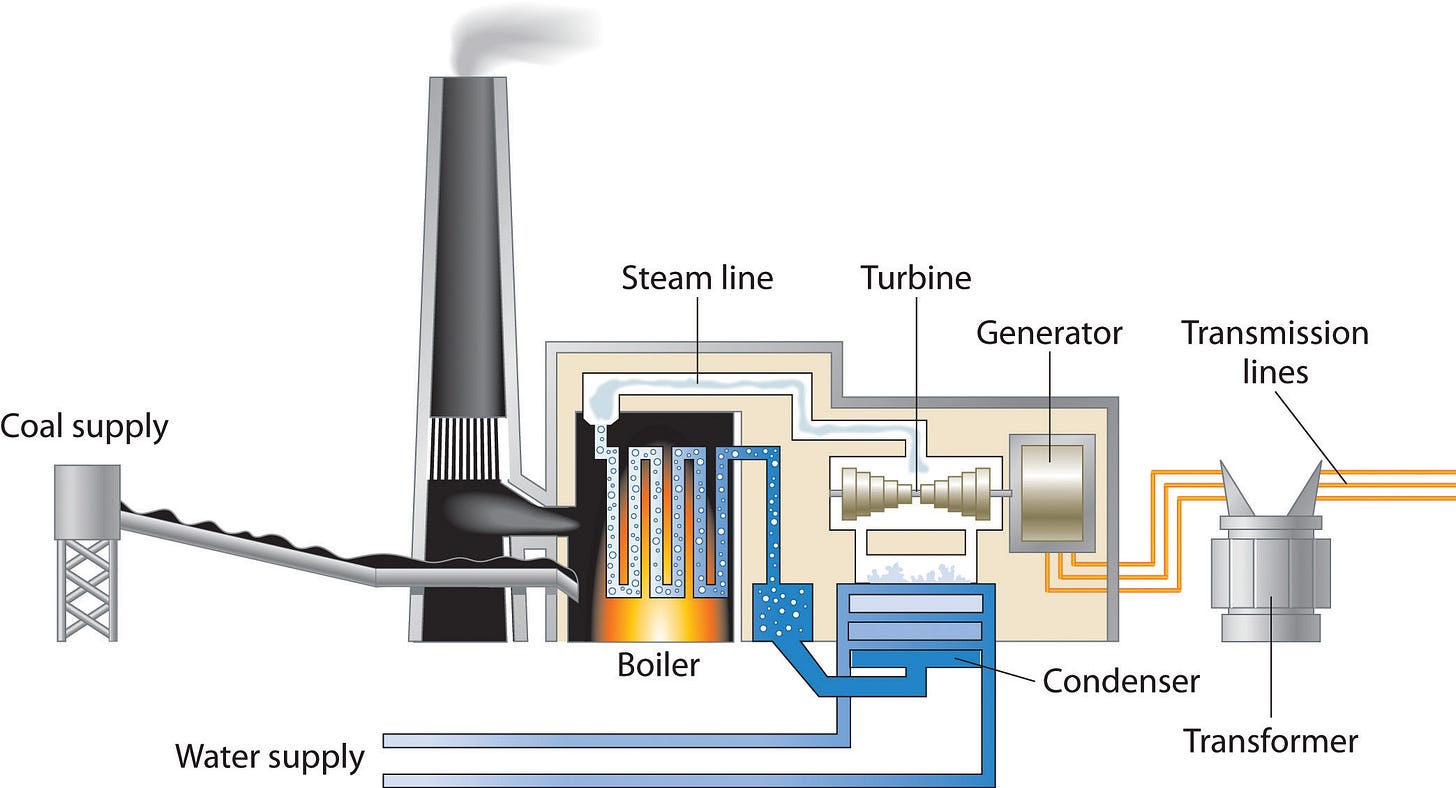
To dissect the coal-driven crisis (and its ripple effects), we need a simple framework. Let's turn back to our Econ 101 classic: Supply & Demand.
Note: In this framework, supply will refer to everything related to energy production, while demand will refer to everything related to energy consumption.
Demand-Side Drivers
First, demand.
This is relatively straightforward: demand for coal (and the electricity it produces) is very high (and rising). The robust global recovery from COVID—and the resulting impact on goods manufactured in China—is one key driver of the demand surge.
Domestic residential coal-powered electricity demand is also up, with a hot summer and lower than normal hydroelectric production. This latter point is worth noting, as it's a supply constraint in one area (hydroelectric) creating a demand surge in another (coal electricity).
As the chart below shows, China has never before seen single year growth in thermal power demand of this magnitude. That creates significant strain on the system.
Supply-Side Drivers
Next, supply.
This one is more complex, with several distinct—yet interconnected—dislocations. The main supply dislocations that I see here are:
Coal Shortages
Import Restrictions
Utility Price Fixing
CCP Emissions Targets (*impacts both supply and demand*)
Let’s cover each one in a bit more detail:
Coal Shortages
Global coal supply has been seriously constrained due to a variety of factors.
Coal mines globally have faced COVID-related shutdowns—with such closures hitting the news in the United States and Colombia, among others. In Colombia, energy giant Glencore walked away from its contracts on its mines after the government refused to allow it to extend its shutdowns.
Further, concerns over the PR risks associated with opening new coal production facilities have held back new market entrants. As Ben Thompson pointed out in a recent Stratechery piece, this meant rising global coal prices haven't really led to new supply entering the market, as traditional economic analysis would suggest.
Import Restrictions
While coal supply has certainly been constrained, China has taken actions that have exacerbated the problem.
They cut Australian imports—which historically represented ~10% of Chinese coal consumption—over a political spat related to the Australian government questioning the origins of COVID-19.
Similarly, China has restricted imports from Mongolia as part of continued anti-corruption crackdowns.
Note: It is worth calling out that there is a difference between thermal coal (used for heating) and metallurgical coal (used for steel production and other industrial processes). Based on recent discussions, it is my understanding that Australian coal is predominantly metallurgical, meaning it would not have as direct an impact on the electricity market. Nevertheless, it is a supply dislocation worth calling out.
Utility Price Fixing
As we all know, China is not a free market capitalist economy.
In China, utility companies face standardized pricing set by the government. This means they cannot raise prices when their input costs spike (as they have).
If your input costs are up, but you can’t raise prices, you’re in trouble.
Utilities are often better off shutting production—which they have done—vs. producing at a loss.
CCP Emissions Targets
President Xi Jinping has made a public pledge to cut carbon emissions—with a goal to reach peak emissions by 2030. This is clearly a positive for the environment, but the policy has led to provinces instituting curbs and blackouts for energy-intensive businesses.
This is nuanced and has both supply and demand impacts:
Supply: Short and long-term market signal that the effective cost of operating as a non-renewable energy supplier has gone up, which reduces economic incentive to produce, further exacerbating supply crunch.
Demand: Lowers energy needs of energy-intensive businesses through forced shutdowns and blackouts.
The net effect is hard to tease out, but it’s undoubtedly another market dislocation to consider in evaluating the situation.
Summing It All Up
So looking at all of this through my (admittedly) simplistic framework, here's what I see:
On one end, a structural surge in demand for energy.
On the other end, a number of significant supply challenges and disclocations.
The result: Demand up, supply down.
Econ 101 tells us what to expect in that scenario: widespread energy shortages and sharp, volatile price increases.
For supply chains, this means continued backups, production delays, and woes.
For consumers, this means rising prices, as these rising costs (energy, supply chains, etc.) are passed through onto your bill. Fed Chair Jerome Powell recently called the inflation “frustrating”—it doesn’t appear to be receding anytime soon.
In our interconnected economy, nobody is insulated from this disruption. We may be in for a long, cold winter…
Sahil’s Job Board - Featured Opportunities
Maven - Marketing Lead (NEW DROP!)
Practice - Head of Marketing (NEW DROP!)
Free Agency - Sales Lead, Talent Agent for Tech (NEW DROP!)
Panther - Global Finance Lead, General Counsel (NEW DROP!)
SuperLayer - CFO (NEW DROP!)
SmartAsset - Acquisition Manager, Paid Search
Consensus - Lead Software Engineer
Fairchain - Software Engineer, Full Stack
Skio - Founding Engineer ($50K REFERRAL BOUNTY!)
Commonstock: Community Manager, Marketing Designer
Scaled - Direct of Operations
The full board can be found here!
We just placed a Head of Community, Growth Lead, Swiss Army Knife, Account Exec, and several other roles in the last month. Results for featured roles have been awesome! If you are a high-growth company in finance or tech, you can use the “Post a Job” button to get your roles up on the board and featured in future Twitter and newsletter distributions.
That does it for today’s newsletter. Join the 37,000+ others who are receiving high-signal, curiosity-inducing content every single week! Until next time, stay curious, friends!

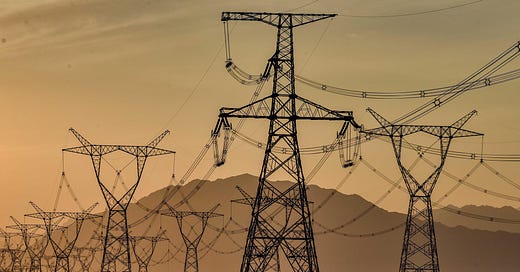










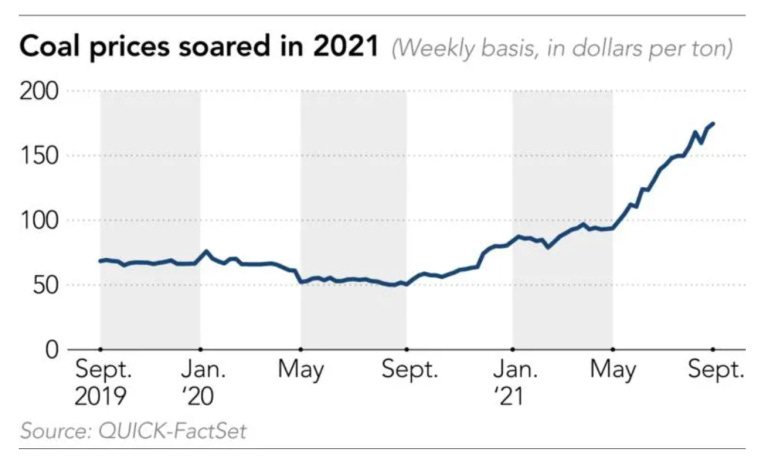
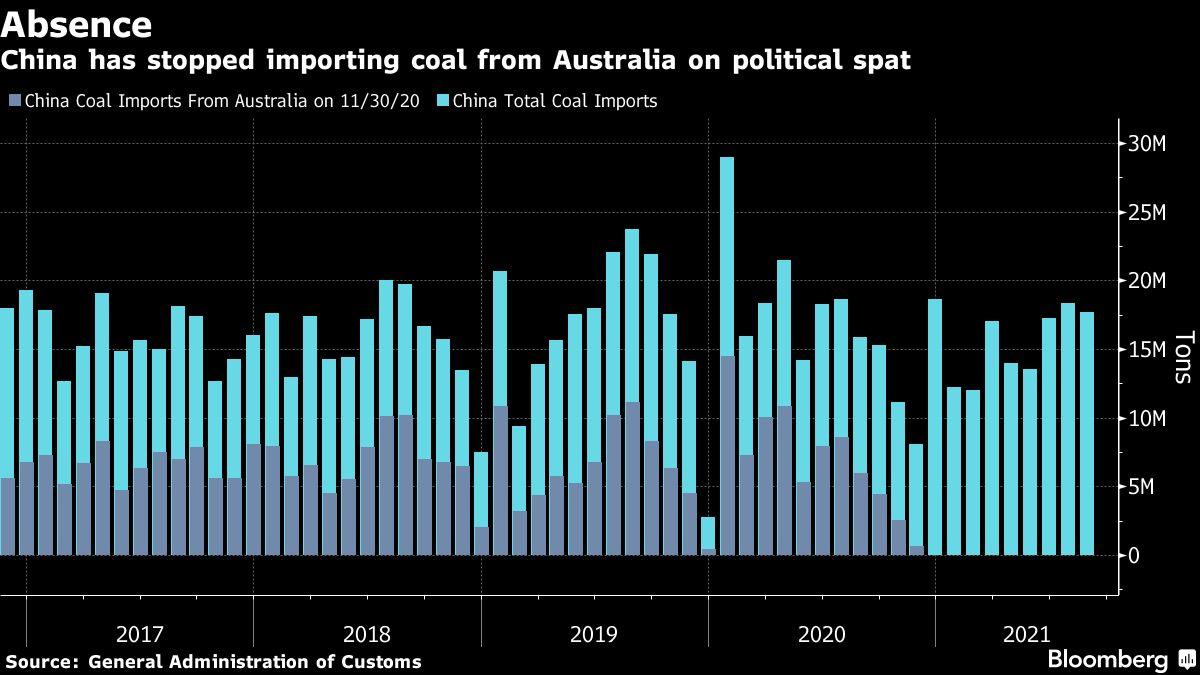



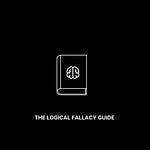





Share this post